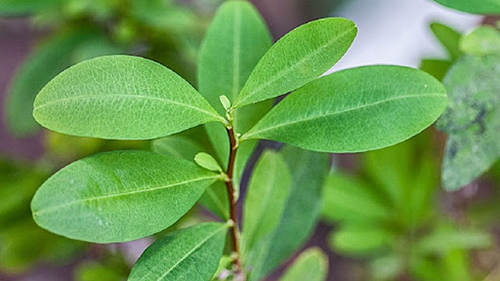Contents
According to an ancient Inca legend, Manco Capac, the son of the Sun and founder of the Inca empire, gave the coca plant leaves to humans as a divine remedy to comfort the afflicted, strengthen the tired, and feed the hungry. When Francisco Pizarro, a Spanish conquistador, arrived in Peru in the early 16th century, the habit of chewing coca leaves had already spread among the natives.
European settlers soon found that giving coca plant leaves to American natives was helpful because they lacked the sensations of tiredness and hunger. It is interesting that today, coca still is a means of becoming extremely rich for some people: drug traffickers, in exchange for the health of many others: cocaine addicts.
However, coca has two faces. Cocaine is an indispensable substance in medical practice. Local anesthetics are derived from it, and thanks to the latter, millions worldwide now receive dental care or undergo surgical operations without pain. Plants like coca, when correctly used, do much good.

Properties and Warning of Coca Plant Leaves
In coca plant leaves, we find diverse alkaloids, among which cocaine is the most important. Other substances are aromatic essences, tannins, heterocyclics, and inactive substances such as calcium oxalate. Cocaine is the active compound that causes the effects of coca, the most outstanding being:

- On the nervous system. It provokes marked excitation, increasing intellectual activity, talkativeness, euphoria, and muscular strength. When the dose increases, shivers, nervousness, and even convulsions appear.
After the excitation phase, when the effects disappear, another degree of depression with sadness and exhaustion comes, inducing another dose. It has been established that after the consumption of cocaine, the elimination of urea increases due to the wasting and degradation of the body proteins themselves. The stimulation it produces also causes corporal exhaustion and wasting, and the body doesn’t receive the required nutrients to compensate for the efforts made. - In the blood system, in medium doses, it produces tachycardia and hypertension, and in high doses, arrhythmia, syncope, and even heart failure.
- Coca plant leaves cause libido alterations and impotence (an aphrodisiac action) in sex. They are a popular remedy in the Andean regions of South America to fight soroche or altitude sickness and the tiredness caused by traveling in high mountain regions. Given their local anesthetic effect, they also calm throat and stomach aches. They may be helpful at a given moment, although avoiding them and using other less toxic remedies is better.
As with other drugs, toxic effects are less in the natural substance and intensify depending on the chemical purification of the substance. Despite this, chewers of coca plant leaves also suffer physical tiredness, nervous alterations, and premature aging, though they are not as affected as cocaine addicts.
The main application of cocaine is as a local anesthetic, though nowadays, its derivatives, such as procaine, are more frequently employed. When injected or sniffed, cocaine desensitizes, allowing painless surgery. It is also used to soak articulations, tissues, and nerves affected by aching.

WARNING! Cocaine, the active principle of coca plant leaves, is one of the drugs with the highest ability known to produce addiction. Furthermore, its continuous use leads to a rapid deterioration of the body, especially the nervous system, with permanent and irreversible injuries. The chronic use of coca plant leaves provokes the same effects, though not as quickly as cocaine. Nonetheless, coca leaves are equally not recommended.

Coca Plant Scientific Facts
- Scientific name: Erythroxylon coca Lam.
- French: Coca.
- Spanish: Coca.
- Environment: It grows wild on the Peruvian Andean mountain between 500 and 1800 m. It is farmed in South America and Southeast Asia.
- Description: Shrub of the Linaceae family, growing up to two meters high. Perennial, lanceolated or oval, short petiolated leaves. Small, white, or yellow flowers growing in the axil of leaves. The fruit is a red berry with one seed.
- Parts of the plant used medicinally: The leaves.
How to use Coca Leaves
- Cocaine derivatives, used for local anesthesia in surgery and dental care, are injected under the skin using a hypodermic syringe. These demi-synthetic derivatives are devoid, in the recommended doses, of any of the excitant effects of cocaine.
DISCLAIMER: All content on this website is presented solely for educational and informational objectives. Do not rely on the information provided as a replacement for advice, diagnosis, or treatment from a qualified medical expert. If you are pregnant, nursing, or have any preexisting medical concerns, talk to your doctor before using any herbal or natural medicines.
REFERENCES
- George D. Pamplona-Roger, M.D. “Encyclopedia of Medicinal Plants.” George D. Pamplona-Roger, M.D. Encyclopedia of Medicinal Plants. Ed. Francesc X. Gelabert. Vols. 1 San Fernando de Henares: Editorial Safeliz, 2000. 180, 181. Print.
- WebMD – https://www.webmd.com/vitamins/ai/ingredientmono-748/coca
- PubMed – https://pubmed.ncbi.nlm.nih.gov/696708/
- RxList – https://www.rxlist.com/supplements/coca.htm
- https://tdtmvjournal.biomedcentral.com/articles/10.1186/s40794-019-0095-7
